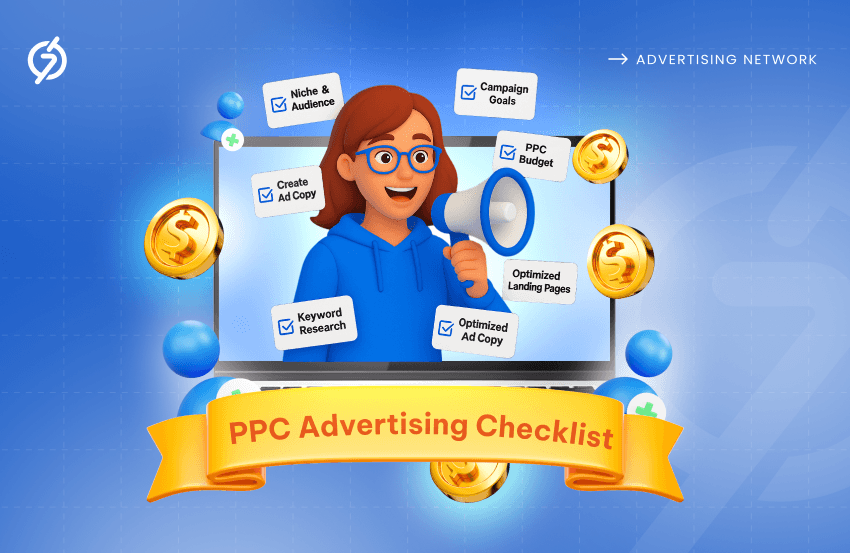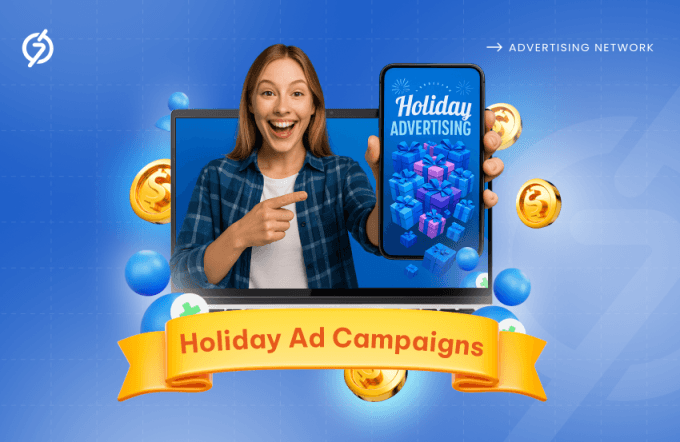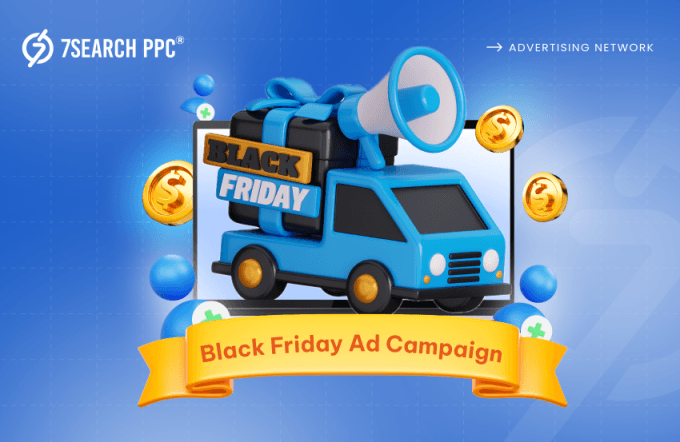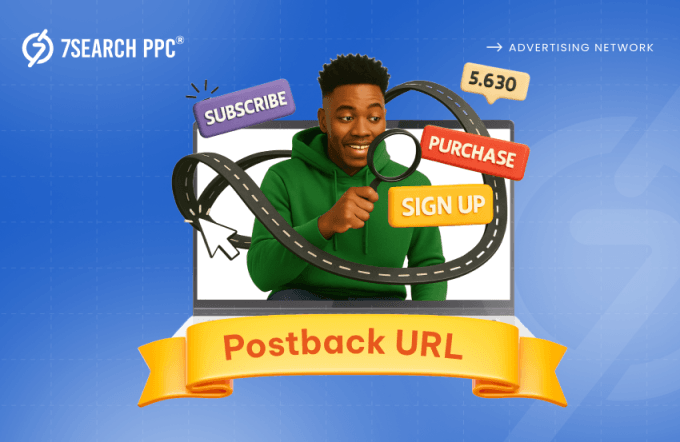When an advertiser new to pay-per-click (PPC) decides to use it, they might think it’s as simple as paying for clicks, getting traffic, and making conversions.
But once they step in, they realize there is a lot more to it: keywords, ad copies, bids, quality score, landing pages, and more to manage. If you’re facing the same challenges, it’s completely normal to feel a bit lost without prior experience with the PPC advertising model.
That’s exactly why we have put together this PPC advertising checklist. It’s a simple guide to help you cover all the important steps before you hit “Launch” on your PPC ad campaign — so you can start strong and avoid the usual beginner mistakes.
Launch Your First Ad With Us — No Experience Needed.
Importance of PPC Advertising Checklist
A PPC audit checklist is highly important before launching PPC ads because it provides a structured approach to monitor, manage, and optimize pay-per-click campaigns. Here is why it matters:
1) Saves Time and Ensures Consistency
A PPC checklist takes your ad campaign to success by helping you stay on track without missing steps. It saves time by guiding you through a clear process and ensures your campaigns are set up the same way every time. This consistency builds reliability and reduces confusion during PPC campaign setup and management.
2) Prevents Costly Mistakes
Running online PPC ads without a proper plan can lead to errors such as targeting the wrong audience or overspending on bids. A PPC advertising checklist acts as a safeguard, reminding you to double-check key elements like your budget, ad copy, landing page, and other aspects of your campaign. It helps you catch small issues early before they turn into expensive problems.
3) Improves Campaign Performance
By following a PPC advertising checklist, you cover all crucial steps like keyword research, ad copy testing, and tracking setup. This structured approach ensures your PPC advertising campaigns run smoothly and deliver better results. Over time, it helps you spot what works best and continuously fine-tune for higher efficiency and ROI.
4) Competitive Edge
Using a PPC advertising checklist gives you an advantage by helping you stay more focused and organized than competitors who skip this step. Over time, you gain stronger insights and a reward in the form of profit from quality Pay Per Click campaign execution, which sets you apart in the market.
Read More: PPC Advertising: The Ultimate Guide To Pay-Per-Click
Proven Pay Per Click Advertising Checklist for New Advertisers
Launching a successful Pay-Per-Click (PPC) ad campaign is no longer as challenging for advertisers, and we can say this with confidence because we have created a proven, step-by-step checklist to help new advertisers achieve the best results from their campaigns. Check it out!
1. Clarify Your Niche and Understand Your Audience

Before starting with PPC ads, it’s important to identify exactly in which vertical or niche your business or product falls under, what your business offers, and who would be most interested in it. Ask yourself: Who are your ideal customers? What do they need or want—and how can your product or service help them? Additionally, never overlook the importance of targeting factors. Segment your audience based on demographics, including age, gender, preferences (e.g., devices, operating systems), interests, and geographic locations (GEOs).
This type of research can benefit you in several ways:
- It helps you identify keywords that perfectly match your offerings and the audience using them on search engines like Google.
- It allows you to choose the right PPC ad network that supports advertising within your vertical or niche, with multiple targeting options and a broad network of relevant publishers.
- It also aids in crafting your brand message. By understanding your niche and ideal audience, you can customize your ad copy to speak directly to their needs.
Keep Reading: Audience Segmentation: Targeting Your Most Important Audiences
2. Define Clear Campaign Goals
Defining clear campaign goals is like setting your destination before starting a road trip. It should not be based on hearing that the pay-per-click model is good for advertising products and services and increasing conversions, and then using it without setting any goals.
You need to know what you want to achieve from PPC advertising— is it more sales, website visits, or brand awareness? Having a clear goal helps you decide how to structure your campaigns, what keywords to target, which KPIs to measure, and more. When your goal is specific and realistic, you’ll walk with the pay-per-click model with a clear sense of direction.
Explore more: How To Build and Measure Brand Awareness?
3. Plan Your PPC Budget
After defining your goals, plan how much money you can spend to reach them effectively. A strategic plan for your PPC budget helps you control costs and divide it across campaigns or ad groups based on priority. You should set aside some funds for testing new keyword variations and bid optimization. Also, it helps in fixing a daily budget, which is more important for the durability of PPC advertising campaigns. Budget planning ensures you get the most value from every click and keeps your campaign running smoothly over time.
Here are some factors to consider when planning a pay-per-click budget:
- Campaign Type: The kind of campaign (like search, display, or shopping) affects how much you need to spend because each works differently and has different costs.
- Competition: Higher competition for certain keywords or premium ad placements increases the cost per click, so plan accordingly.
- Seasonality and Timing: Spending may need to go up during peak seasons or special events when demand is high.
- Target Audience and Geography: PPC ads targeting specific locations or demographics may cost more depending on audience size and location.
Keep Reading: Advertising Budget: Where to Spend and How to Save
4. Monitor Your Competitors Closely
Keeping an eye on your competitors helps you understand what works in your niche and what gaps you can fill. You should look at their ad copies, keywords, and landing pages to learn from them—not to copy, but to do better. You can also use tools like SpyFu to understand your competitor’s PPC strategy, such as how they structure their campaigns or what offers they promote. By doing this, you can refine your PPC ads, adjust bidding strategies, and create something more appealing to your audience.
5. Conduct Proper Keyword Research
So, after looking at your competitor’s strategy, you will get an idea for your PPC campaign. With all the groundwork set, now focus on finding the right keywords — the words your potential customers type into search engines. You can use popular tools like Keyword Planner or Semrush to discover terms with good search volume, less competition, and, of course, affordable bids.

Include a mix of broad, phrase, and exact-match keywords to reach different types of searchers. Also, identify negative keywords to avoid wasting money on irrelevant clicks. Good keyword research connects your online PPC advertisements to people actively looking for what you offer. This PPC advertising checklist ensures your campaigns are well-targeted and cost-effective.
Discover More Insights: Power of Keywords: An In-Depth Analysis of PPC Keyword Research
6. Choose the Right PPC Advertising Platform
There are many ad networks out there offering PPC advertising, but not all are the same. To pick the right one, you should look at a few key things that really matter for your PPC advertising campaigns:
- Traffic Quality and Source: Always check where the traffic comes from. You want real, high-quality clicks from genuine users — not bots or low-value sources that don’t convert.
- Ad Targeting Options: Look for PPC networks that let you target your ads based on locations, devices, or operating systems. The more precise the targeting, the better your ads will perform.
- Ad Formats: Make sure the network supports ad types that fit your PPC advertising goals — whether that’s text, banner, native, popunder, or in-page push ads.
- Pricing Models: Different networks have different pricing models, like CPC, CPM, or CPA. Choose one that fits your budget and campaign objective so you get the best return for your ad spend.
- Ad Approval Time: Some PPC advertising platforms, like 7SearchPPC, review and approve ads faster than others. Quick approvals mean you can launch campaigns sooner and make changes without long waits.
- Verticals Offered: Check if the network supports your business type or niche. Some ad platforms work better for specific industries, so pick one that aligns with your products or services.
- Ad Manager and Customer Support: Good support can make a huge difference, especially when you’re new. Choose a PPC ad network or platform that offers responsive help whenever you need it.
Explore This Topic: 15 Best PPC Advertising Networks in 2025
7. Create Compelling Ad Copy, Use Extensions Effectively, and Design Engaging Creatives
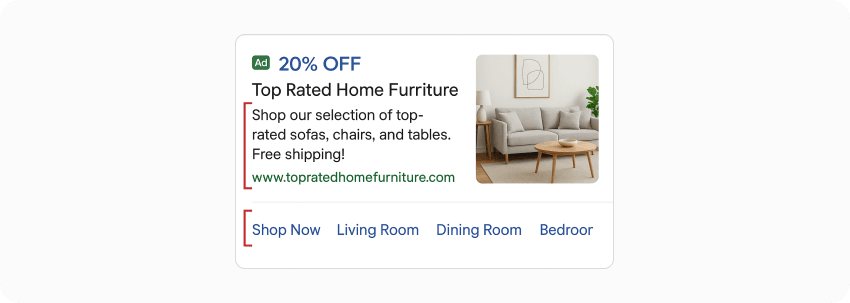
Your ad is your first impression — make it count. You must use simple but powerful words that speak directly to your audience’s needs. Highlight the value you offer, not just the service or product. Add ad extensions smartly to give extra details without crowding the message. Pair your copy with visuals that feel fresh, scroll-stopping, and relevant. Your goal should be to make someone pause and think, “This is exactly what I was looking for.” Once your ad grabs attention, it should lead to a landing page that continues the same story seamlessly.
Dive Deeper: Upgrade Your Writing Skills for an Irresistible PPC Ad Copy?
8. Design Optimized, Conversion-Focused Landing Pages
After a user clicks your PPC ad, the landing page determines what happens next. It should match your ad’s promise and give visitors a reason to act immediately. You should keep your design clean, highlight your offer clearly, and make your call-to-action easy to find. Fast-loading pages with strong visuals and minimal distractions convert better, so focus on that also. Always align headlines and keywords between your ad and landing page to build trust and consistency. A strategic landing page isn’t just about visuals; it’s about guiding visitors smoothly toward the goal you defined earlier.
Learn More Here: How Great Landing Page Can Help Your PPC Campaign?
9. Set Up Smartly Planned Ad Scheduling and Target the Best Times

When discussing a PPC advertising checklist, you can’t ignore one of the most important factors — the timing of your ad campaigns. Run your PPC ads when your audience is most active — not just randomly through the day. Use ad scheduling to control when your ads run — for example, during business hours or specific days when you see the best results. Review your data to find high-performing time slots and adjust accordingly. Running ads at the right time ensures better visibility, higher engagement, and a stronger ROI — without wasting your PPC budget on low-traffic hours.
10. Run A/B Tests for Continuous PPC Campaign Optimization
No matter how well-planned your campaign is, there is always room to improve. That’s where A/B testing comes in. You can experiment and test with small elements— like different headlines, button colors, or CTA wording — to see what clicks with your audience. Don’t test everything at once; change one element at a time to get clear insights. Over time, these small tweaks can increase your click-through rates and conversions significantly.
11. Monitor Campaigns Regularly and Adjust for Ongoing Improvement
Your job isn’t done after launching online ads. PPC campaigns need regular check-ins to stay profitable. Track key metrics like CTR, conversion rate, and cost per click. Identify which ads perform best and which ones need changes. Adjust your targeting, budget, or keywords based on performance data. Continuous monitoring keeps your campaign healthy and growing. In PPC, success is about learning, adjusting, and staying consistent. The more attention you pay, the stronger your campaigns become.
Learn the Complete Story: Audit PPC Campaign Metrics For Optimal Campaign Success
4 Common Mistakes to Avoid When Following a PPC Checklist
Even with a solid PPC advertising checklist in hand, many advertisers still make small but costly mistakes that affect their campaign results. Here are some common ones you should look out for:
1. Skipping the Basics
Many new advertisers jump straight into campaign setup without understanding the basics. Take time to learn what each step means. Knowing why you’re doing something helps you make smarter and more effective ad decisions.
2. Not Following the Step-by-Step Process
A PPC advertising checklist is made to guide you in the right order. If you skip or mix up steps, you may miss important settings or targeting options. Follow each step carefully to get the best results.
3. Setting Unrealistic Goals
This mistake happens when advertisers expect big results in a very short time or with a small budget. Unrealistic goals lead to frustration and poor decisions. Setting practical, achievable goals helps you stay focused, measure real progress, and improve your campaign over time.
4. Forgetting to Optimize Regularly
Many advertisers launch their campaigns and never check back. PPC needs regular tuning—adjusting keywords, bids, and creatives. Small, consistent updates over time can significantly improve your campaign’s performance.
Conclusion
Starting your PPC journey might feel a bit confusing at first, but with a clear checklist in hand, you’re already halfway to success. Each step — from setting goals to optimizing regularly — helps you build stronger, smarter campaigns. Remember, PPC isn’t about rushing; it’s about learning, testing, and improving over time. Follow this checklist, stay patient, and soon you’ll see your campaigns’ top performance.
Frequently Asked Questions (FAQs)
Why do new advertisers need a PPC advertising checklist?
Ans. A PPC checklist helps beginners follow a clear process and avoid missing key steps. It keeps your campaigns organized, reduces errors, and increases your chances of success.
Is PPC advertising expensive for beginners?
Ans. Not necessarily. PPC can fit any budget if you plan wisely. You can start small, test campaigns, and increase spending only when you see good results.
How do I choose the right PPC ad platform?
Ans. Look for platforms that offer quality traffic, precise targeting options, quick ad approvals, and strong customer support. Always pick one that matches your business niche and advertising goals.
What should I include in my PPC campaign goals?
Ans. Your goals should be clear and measurable—like increasing sales, boosting website visits, or improving brand awareness. Clear goals guide your ad strategy and make it easier to track success.
How often should I monitor my PPC campaigns?
Ans. You should check your campaigns regularly — at least once or twice a week. Regular monitoring helps you identify problems early and make quick improvements.
What are some common PPC mistakes to avoid?
Ans. Avoid skipping the basics, setting unrealistic goals, ignoring optimization, or rushing through steps. Always follow a proper process and review your performance data regularly.

